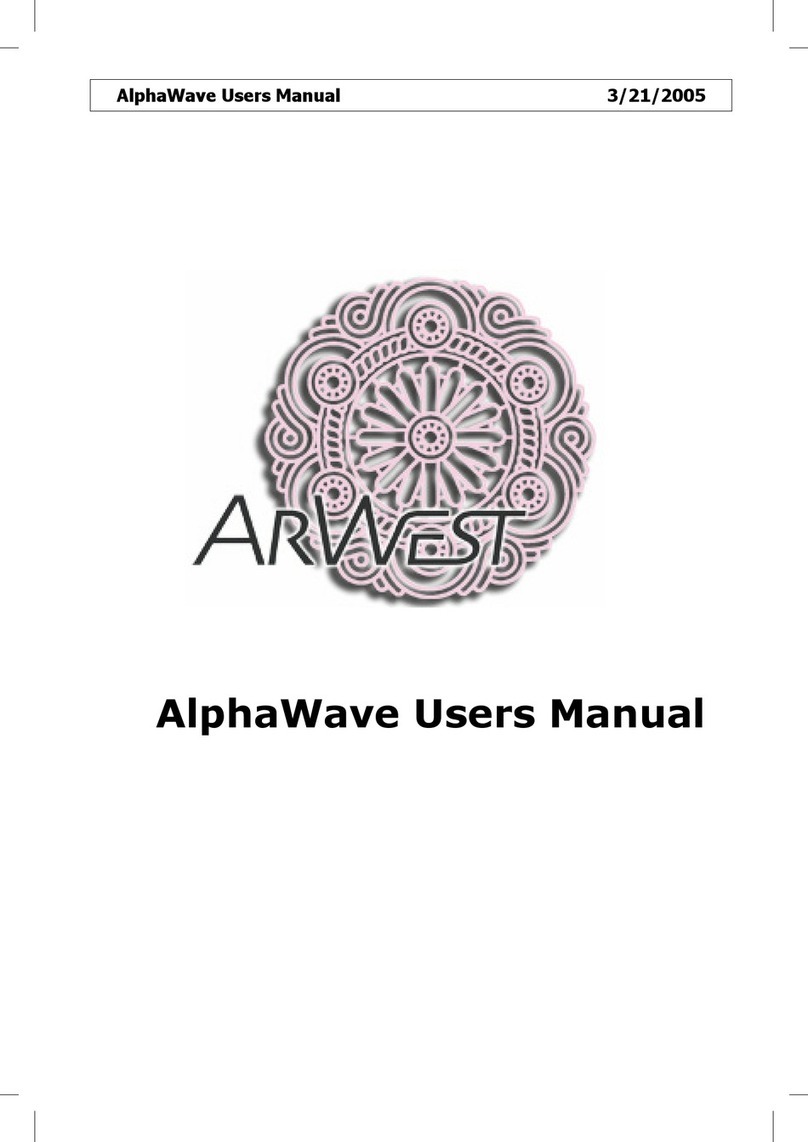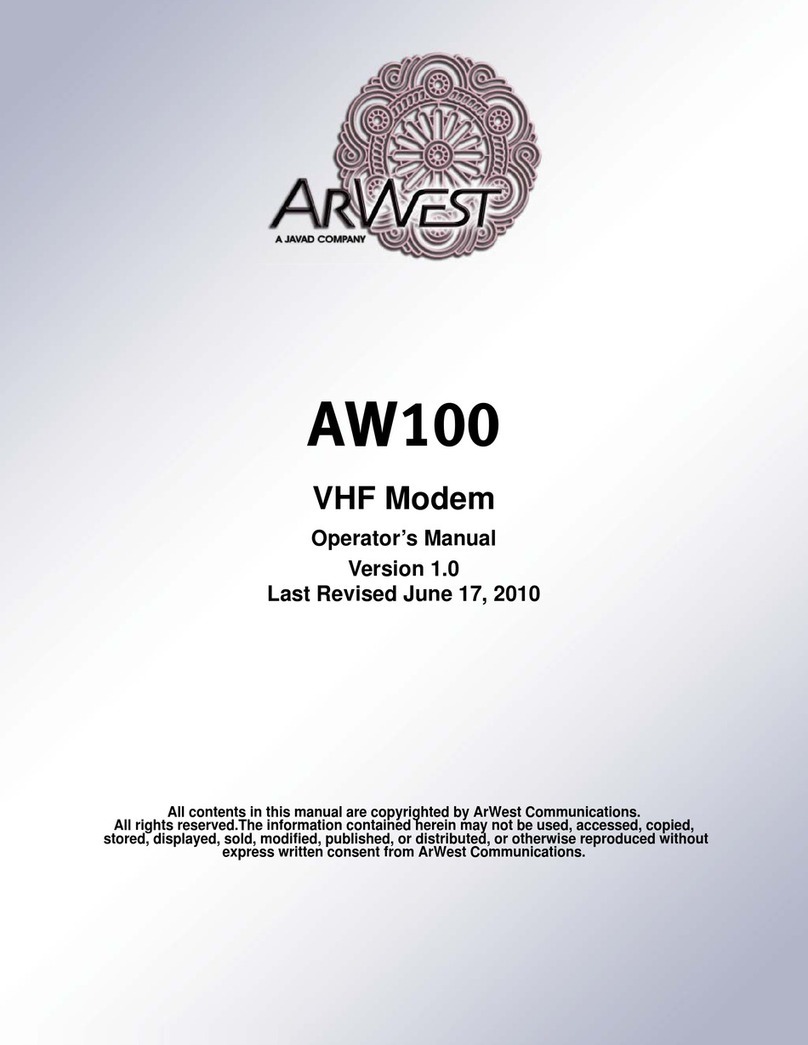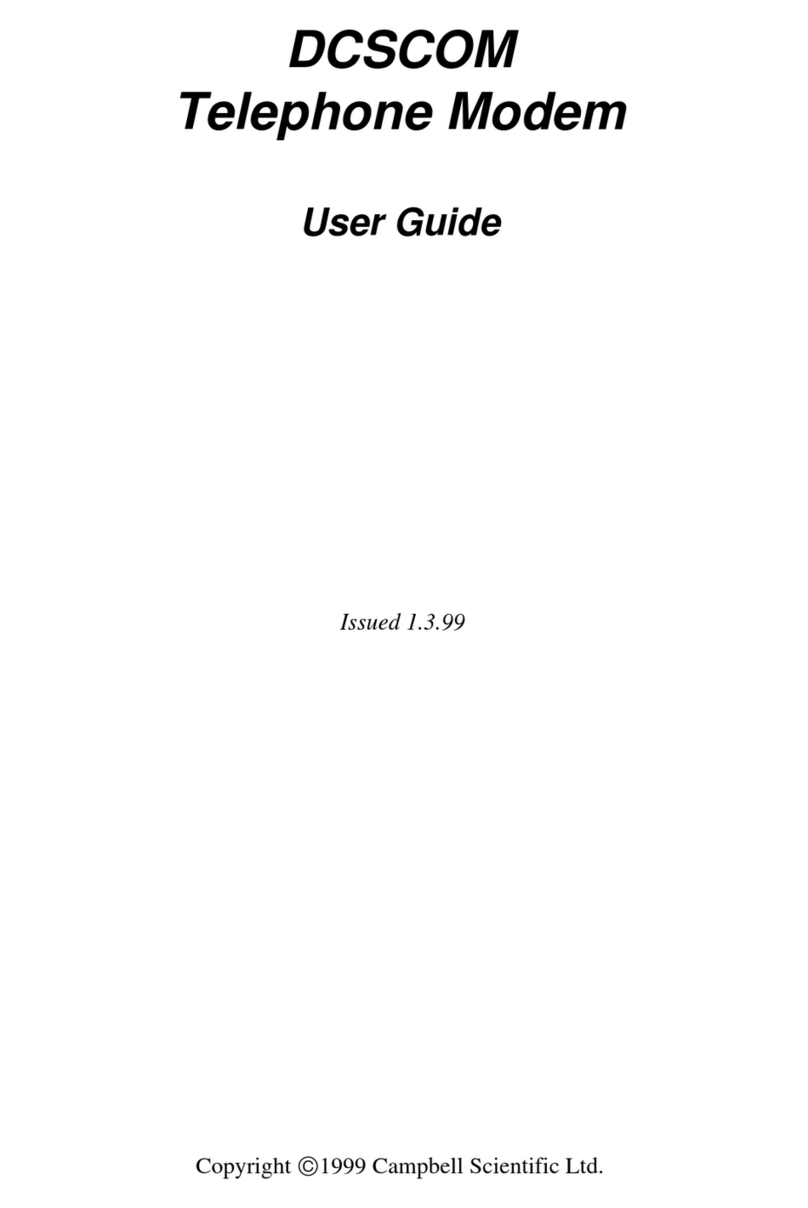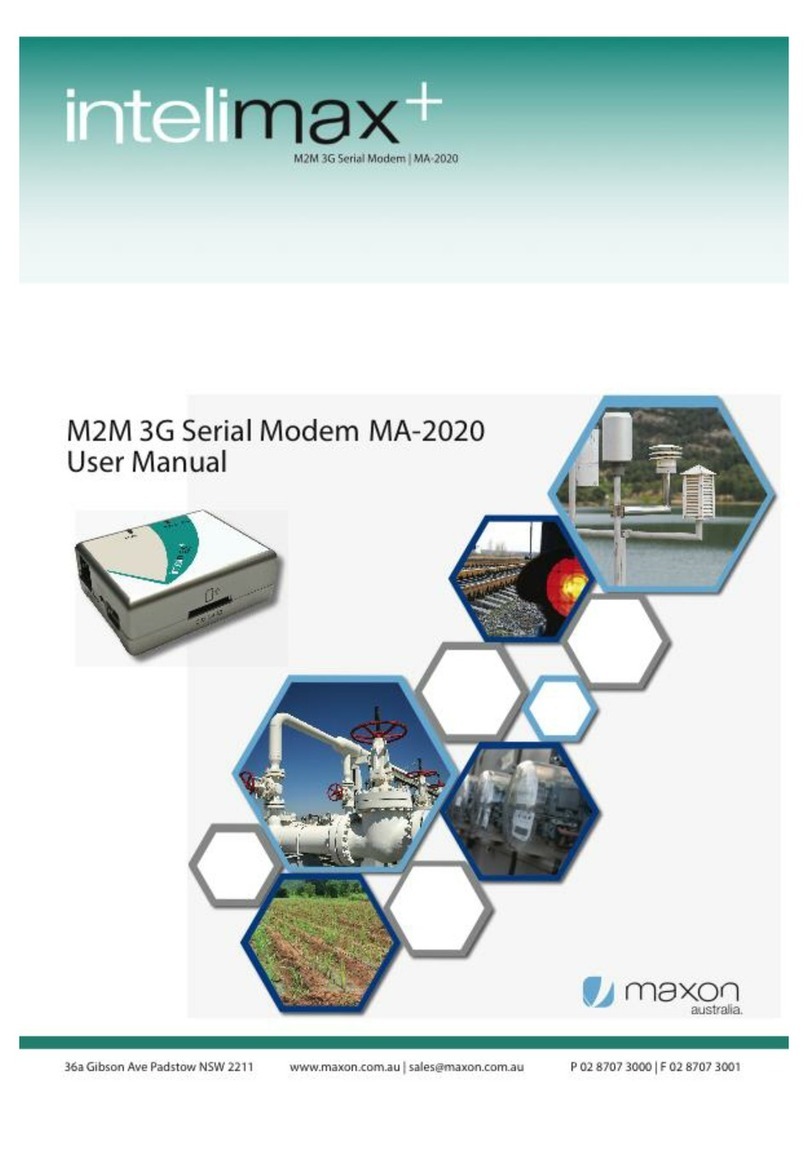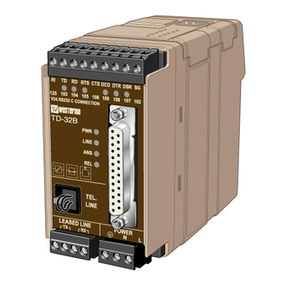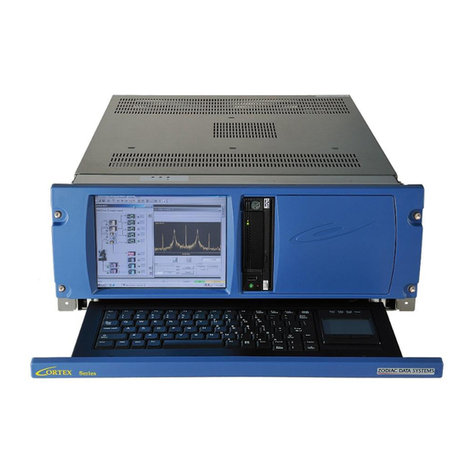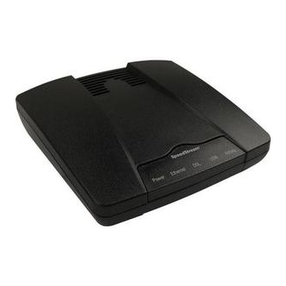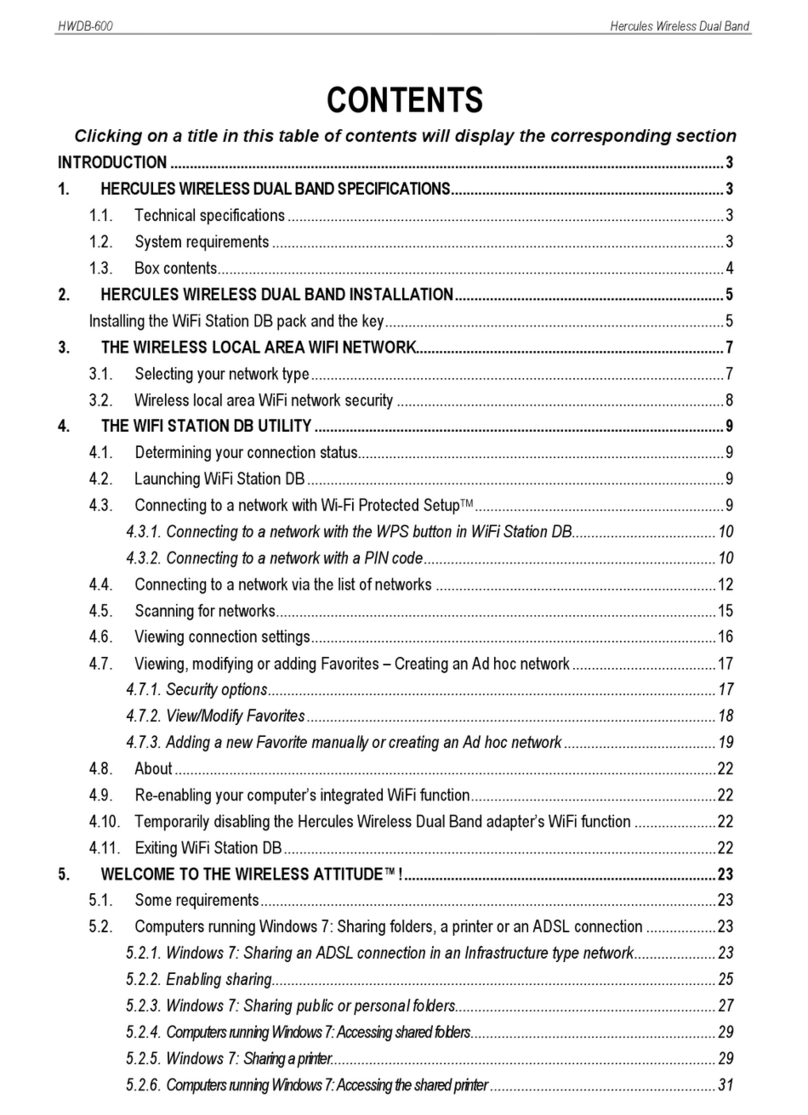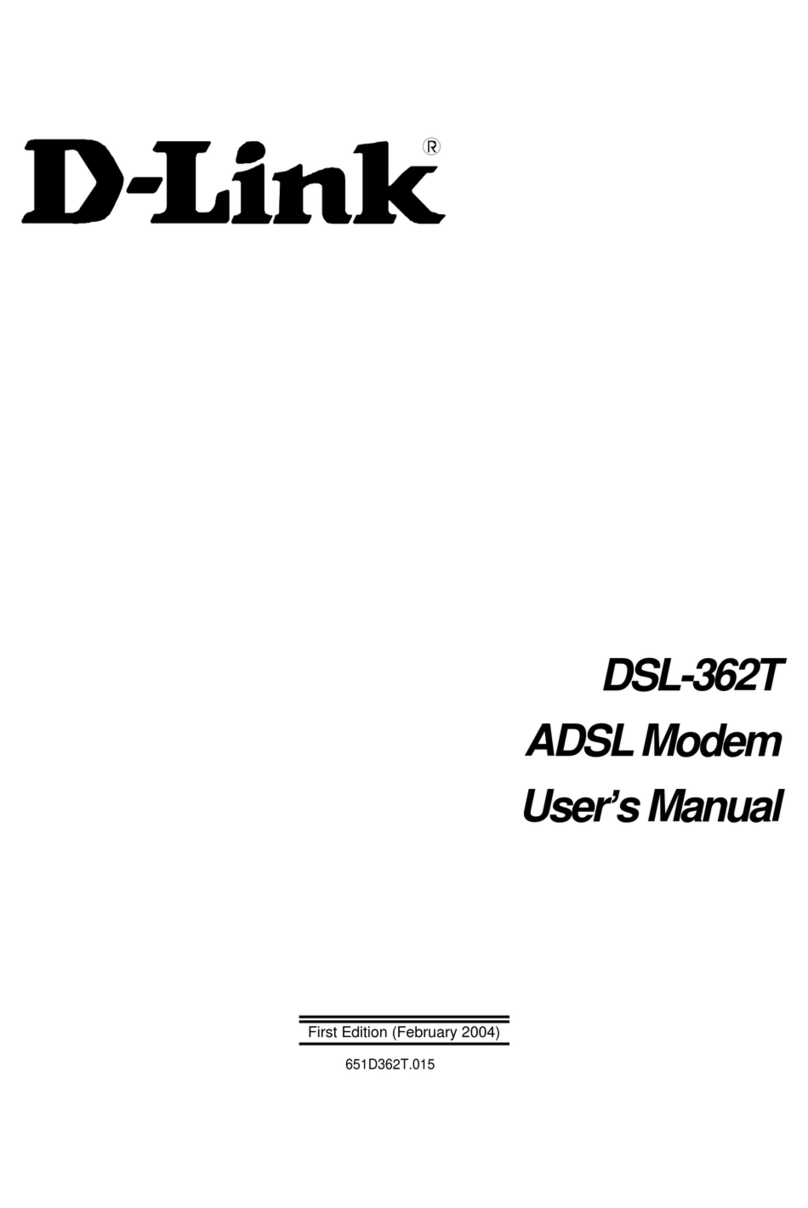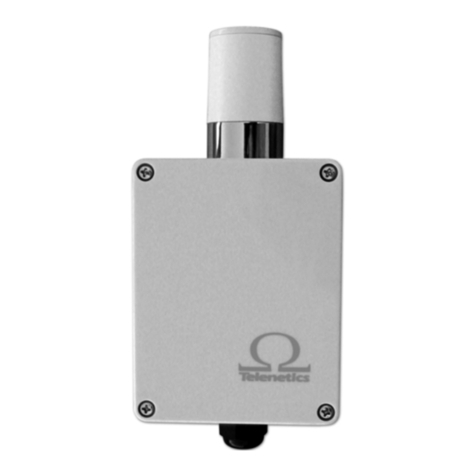ArWest FH915 Specification sheet

All contents in this manual are copyrighted by ArWest Communications.
All rights reserved.The information contained herein may not be used, accessed, copied,
stored, displayed, sold, modified, published, or distributed, or otherwise reproduced without
express written consent from ArWest Communications.
FH915
Features Guide
Version 1.0
Last revised November 12, 2013

www.arwestcom.com
TABLE OF CONTENTS
1. Command mode. . . . . . . . . . . . . . . . . . . . . . . . . . . . . . . . . . . . . . . . . . . . . . . . . . . . . . . . . . 3
2. Info. . . . . . . . . . . . . . . . . . . . . . . . . . . . . . . . . . . . . . . . . . . . . . . . . . . . . . . . . . . . . . . . . . . . 4
3. The default settings . . . . . . . . . . . . . . . . . . . . . . . . . . . . . . . . . . . . . . . . . . . . . . . . . . . . . . . 4
3.1. boot . . . . . . . . . . . . . . . . . . . . . . . . . . . . . . . . . . . . . . . . . . . . . . . . . . . . . . . . . . . . . . 4
3.2. link. . . . . . . . . . . . . . . . . . . . . . . . . . . . . . . . . . . . . . . . . . . . . . . . . . . . . . . . . . . . . . . 5
4. Additional settings . . . . . . . . . . . . . . . . . . . . . . . . . . . . . . . . . . . . . . . . . . . . . . . . . . . . . . . . 7
5. Using the modem as a repeater . . . . . . . . . . . . . . . . . . . . . . . . . . . . . . . . . . . . . . . . . . . . . . 9
6. Modem protection from interference. Exclusion of unwanted frequencies. . . . . . . . . . . . 10
7. Regional features of the modem FH915 . . . . . . . . . . . . . . . . . . . . . . . . . . . . . . . . . . . . . . 10
7.1. Region 0. . . . . . . . . . . . . . . . . . . . . . . . . . . . . . . . . . . . . . . . . . . . . . . . . . . . . . . . . . 11
7.2. Region 1. . . . . . . . . . . . . . . . . . . . . . . . . . . . . . . . . . . . . . . . . . . . . . . . . . . . . . . . . . 11
7.3. Region 2. . . . . . . . . . . . . . . . . . . . . . . . . . . . . . . . . . . . . . . . . . . . . . . . . . . . . . . . . . 11
7.4. Region 3. . . . . . . . . . . . . . . . . . . . . . . . . . . . . . . . . . . . . . . . . . . . . . . . . . . . . . . . . . 11
8. Modem and Channel Diagnostics . . . . . . . . . . . . . . . . . . . . . . . . . . . . . . . . . . . . . . . . . . . 12
8.1. Estimation of the reception quality “On the Fly” . . . . . . . . . . . . . . . . . . . . . . . . . . 12
8.2. RSSI distribution in frequency . . . . . . . . . . . . . . . . . . . . . . . . . . . . . . . . . . . . . . . . 12
8.3. The distribution of noise and interference on frequencies . . . . . . . . . . . . . . . . . . . 13
8.4. Scanner . . . . . . . . . . . . . . . . . . . . . . . . . . . . . . . . . . . . . . . . . . . . . . . . . . . . . . . . . . 14
8.5. BER measurement . . . . . . . . . . . . . . . . . . . . . . . . . . . . . . . . . . . . . . . . . . . . . . . . . . 15
8.6. Modem features programming in the region 0 . . . . . . . . . . . . . . . . . . . . . . . . . . . . 16
9. Test signals forming . . . . . . . . . . . . . . . . . . . . . . . . . . . . . . . . . . . . . . . . . . . . . . . . . . . . . 17

3www.arwestcom.com
FH915 FEATURES GUIDE
Please use this Features Guide to get familiar and have a good understanding with yours FH915 OEM
modem (below the Modem).
See FH915 User Manual for full description and service operation details at ArWest website
www.arwestcom.com.
FH915 is a multi functional, compact, reliable Spread Spectrum Radio Transceiver.
The following steps summarize the procedure of FH915 installing:
• The easiest way to access the FH915 OEM board is to use the Evaluation Kit (p / n 99-571010-
01). The FH915 connected directly to Evaluation Kit (p/n 99-571010-01) by its 16-Lead Header
Connector, ECS Corp.
• A standard Null-Modem cable (included in Kit) with DB-9 Female connectors on both ends may
be used to connect PC COM_X port with Serial port on adapter.
Additionally, you may need to install on your computer a software like JNSTerm.exe or Hyper Terminal
and ModemVU – Windows based Unit Configuration and Maintenance Software Application running on
a IBM PC compatible computer.
Connect to FH915 modem at 115200/8/N/1/HW.
1. Connect adapter to the computer’s serial port PC, then power it using Power Supply 9.0 ... 20.0
VDC.
2. A greeting string from serial port appears on the screen of the JNSTerm.exe or Hyper Terminal:
“Javad GNSS. Real Time Firmware Version 3.1.15, Mar 27 2013”
Modem status is defined by configuration file. Modem is in the data mode and ready to receive or
transmit the data. The received data can be obtained through a serial port RS232. Data transfer can also be
served through a serial port RS232. The full description of the commands which control the routing of the
data stream is presented in the user manual.
The built-in user-friendly Command Line Interface (CLI) allows user to perform a full configuration of
the unit and read the statistics and alarm status. It is the most powerful tool to configure the unit. It makes
changes to all possible settings that system will not be able to determine automatically.
1. Command mode
On power-up the radio modem is in data-mode. To switch to command mode send to the port the Escape-
Sequence
+++
. All bytes that come into the port after this command the modem will recognize as a
command sequence.

FH915 Features Guide
Info
Default configuration
4
www.arwestcom.com
The modem automatically returns to data mode, if the next command won't be sent to the port within 45
seconds. To return to data mode from command mode use command
datamode\n
.
2. Info
If you give the command
info\n
, the Modem answers:
FH915 Land Mobile Radio, Javad GNSS.
Product ID =41
S/N =BT001
Hardware =2
Firmware =3.1.14
BootLoader =4.03
MstrDev =0
@00
Where:
Product ID =41
– the FH915 board product identification number;
S/N =BT001
- the serial number assigned to the FH915 board at the factory;
Hardware =2
- the revision number of the modem board;
Firmware =3.1.14
- Version of FW FH915 board;
BootLoader =4.03
- Version of the Bootloader;
MstrDev =0
- Code of the device, which uses a modem FH915 board;
0
- the FH915 is OEM board.
3. The default settings
3.1. Default configuration
Modem status is determined by the configuration file, which stores user's settings. The factory settings
are stored in the default configuration file. At any time you can return the modem to the default
configuration file by sending two commands
Cfg2dflt\n
and
boot\n
.
It is convenient to start the acquaintance with the modem with the default settings.
The current status of the modem can be called by using commands
state\n
,
link\n
, and others.

FH915 Features Guide
The default settings
state
5www.arwestcom.com
3.2. state
If you issue the command
state\n
, the modem answers:
Region =1
Tx =915000000
Rx =915000000
T=43.50
@00
Where
Region =1
- the region code; 0 – EUR; 1 – USA; 2 – AUS; 3 – SPC.
Note: The region code specifies the frequency range, the signal structure, so that many modem settings are
related to the choice of the region.
Tx =915000000
- the preset value of the transmitter frequency in Hz.
Rx =915000000
- the preset value of the receiver frequency in Hz.
T=43.50
– Temperature on the FH915 board near the power amplifier.
3.3. link
The Modem settings can be accessed using the
link\n
.
If you issue the command
link\n
, the Modem answers:
MOD =5
PWRB =15
FHOP =0 0
TRFC =1
SCRAM =1
FEC =1
DCRC =0
DLNG =0
DSRV =0
LBT =1
@00
Programmable parameters and their meaning:
MOD =5
– the modulation type code;
PWRB =15 - programmable output transmitter power;
Parameter
PWRB
can be read by command
link pwrb\n
.

FH915 Features Guide
The default settings
link
6
www.arwestcom.com
The set output transmitter power use the command
link pwrb D\n
,
D =7,8, … ,30
– output power in dBm.
FHOP = 0 0
- selected transmitter and receiver frequency hopping sequences. The first parameter specifies
the frequency sequence selected for the transmitter, the second - for the receiver.
Command to read the parameters –
link fhop\n
.
Command to set both parameters –
link fhop D\n.
D – 0,1, … ,9
– for Region 1;
D – 10,11, … ,19
– for Region 2.
In the region
0
the frequency hopping is not used.
Command to set the frequency sequence of the transmitter –
link fhtx D\n
.
Command to set the frequencies sequence of the receiver –
link fhrx D\n
.
TRFC = 1 – the mode of the subpackage transmission at two different frequencies with a choice of the
best subpackage at the reception.
The command to read parameter –
trfc\n
.
The command to set parameter –
trfc D\n
.
D =0
– subpackets transmitted without repetition.
D =1
– subpackets transmitted at two different frequencies with a choice of the best subpackage at the
reception.
D =2
– subpackets are transmitted only on the even frequencies. Odd frequencies reserved for data
reception.
TRFC =2
- "transparent mode" - in this mode two modems can implement a "full duplex" - duplex
transmission mode in which data transfer can be maintained "simultaneously" with the reception of data.
SCRAM = 1
- data scrambling.
The command to read parameter is
link scram\n
.
Command to set –
link scram D\n
.
D = 0
- data without scrambling;
D = 1
- the standard scrambling;
D = 2
- used scrambling, defined by the user.
FEC = 1
- data encoding.
The command to read parameter is link fec\n.
Command to set – link fec D\n.
D = 0 - data is transmitted without encoding;
D = 1 - data is encoded standard convolution code with R = 1/2.

FH915 Features Guide
Additional settings
link
7www.arwestcom.com
DCRC = 1
- manage the output of the received data to the port.
The command to read parameter is dcrc\n.
Command to set –
dcrc D\n
.
D = 0
- received data are distributed to the port, regardless of the received data CRC.
D = 1
- data are distributed to the port only if the CRC is correct.
DLNG = 1
- used validation the receipted parameter length subpackage data
The command to read parameter is
dlng\n
.
Command to set –
dlng D\n
.
D = 0
- validation of the receipted parameter length subpackage data is not used.
D = 1
- validation of the parameter is used.
DSRV = 1
- a number of receiver parameters passed to the receiver through the channel.
The command to read parameter is
dsrv\n
.
Command to set –
dsrv D\n
.
D = 0 -
the receiver's parameters are set from the configuration file.
D = 1
- a number of the receiver parameters are set from service data passed to the receiver through the
channel.
LBT = 1
- Listen Before Talk. The channel occupancy is verified before subpackage transmitting. If the
channel was occupied at the previous slot, the current slot is not used for data transmission.
The command to read parameter is
lbt\n
.
Command to set –
lbt D\n
.
D = 0
- Listen Before Talk mode is turned off.
D = 1
- Listen Before Talk mode is enabled.
To save the settings in the configuration file, you must issue the command
save\n
.
4. Additional settings
Parameter PMP - provides the addressed data transfer as well as the ability to transfer commands. If
parameter PMP is not zero, then its value is displayed in the response to the command
link\n
.
For example, the response to the command
link\n
when
PMP =3
:
MOD =5
PWRB =15
FHOP =0 0
TRFC =1
PMP =3, 44 123 091 123

FH915 Features Guide
Additional settings
link
8
www.arwestcom.com
SCRAM =1
FEC =1
DCRC =0
DLNG =0
DSRV =0
LBT =1
@00
The first parameter in the string
PMP =3, 44 123 091 123
represent РМР value.
The command to read parameter PMP is
link pmp\n
.
Command to set – link pmp D\n.
PMP = 0
– Any transmits, any receives. At the receiver side neither the source nor the recipient is
validated.
When
PMP> 0
received data contain proprietary service information:
WHT
- a type of data;
DST
- code of the recipient;
SRC
- the data source code. By defaults
SRC
coincides with the last three symbols of the transmitter
SN
, but
can be reprogrammed.
The configuration file contains the parameter
KNW
- the code of the certified data source;
PMP = 1 –
Any transmits to me only. The receiver compares the received code
DST
with its code
SRC
. If the
received code
DST
coincides with the code
SRC
of the receiver, the received data are distributed to the port.
If the received code
DST
is not coincide with the code
SRC
of the receiver, the received data to the port are
not provided.
PMP = 2
– Certified Base transmit to any. The receiver compares the received code SRC and code KNW. If
the received code SRC coincides with the code KNW, stored in the configuration file of the receiver, the
received data are distributed to the port.
If the received code SRC is not coincide with the code KNW, then the received data to the port are not
provided.
RMR = 3
– Certified Base transmit to me only. The receiver compares the received codes: code
DST
with its
code
SRC
and the code
SRC
with the code
KNW
.
If these codes match the received data are distributed to the port.
Other parameters of the string –
PMP =3, 44 123 091 123
- deciphered as follows:
PMP = 3, WHT DST SRC KNW
WHT
– type of data: WHT =44 (D) – data; WHT =43 (C) – command.
If the modem transmits data (with PMP> 0) it indicates that its (091) data (44) are designated to
modem which code S
RC =123.
If the modem receives data (with
PMP = 3
) it compares own code
SRC =091
with code
DST
in the received
signal, checks that the code SRC specified in the received signal matches the
KNW =123
stored in the
configuration file. If both codes match the received data (
44
)are distributed to the port.

FH915 Features Guide
Using the modem as a repeater
link
9www.arwestcom.com
If these data are the command (
43
)then the command is executed.
It should be noted that the command is executed only if the
CRC =OK,
whatever you selected
DCRC =1
in the
configuration file or not.
5. Using the modem as a repeater
Parameter
REP
allows using the modem as a data repeater. Retransmission of the data requires the time,
because the transmitting modem uses a transfer mode only on even-numbered slots (
TRFC = 2
). The
receiving modem operating as a repeater (
REP = 1
), must also be set
TRFC = 2
.
If parameter
REP
is not zero, then its value is displayed in a
link\n
response.
For example, below you can see the response to the command l
ink\n
for R
EP = 1: (TRFC =2
is set
before).
MOD =5
PWRB =15
FHOP =0 0a
TRFC =2
REP =1
SCRAM =1
FEC =1
DCRC =0
DLNG =0
DSRV =0
LBT =1
@00
The command to read parameter
REP
is
link rep\n
.
Command to set –
link rep D\n
.
D = 1
- modem retransmits the received data.
While data transmitter (Base) uses only the even slots (even-numbered frequencies), the repeater must
use the odd slots (odd-numbered frequencies), i.e. use the frequency sequence with single offset -
sequence in which all frequencies shifted by one position in a circle.
Example:
All Rovers receive data at the frequency sequence FHRX =0.The Repeater transmit data at the
frequency sequence FHTX =0.
The repeater receives the data from the Base at the frequency sequence with “single offset”
FHRX =0a. The Base transmits data to the repeater using the frequency sequence with “single
offset” FHRX =0a.
Base not produces an interference for Rovers, since the Base transmits data using FHRX =0a,
but Rovers receive at FHRX =0.
Command to set the frequency sequence with single offset for the transmitter is
link fhtx Da\n
.

FH915 Features Guide
Modem protection from interference. Exclusion of unwanted frequencies
link
10
www.arwestcom.com
Command to set the frequency sequence with single offset for the receiver is l
ink fhrx Da\n
.
6. Modem protection from interference. Exclusion of
unwanted frequencies
If interference contains a big power at some frequency such frequency can be excluded from the use.
To eliminate unwanted frequency, for example, 908400000 Hz it must be added to the list of unwanted
frequencies and stored in the configuration file. To do that use the command
nadd 908400000\n.
After this
command modem answers:
1F 908400000
@00
where 1F - number of frequency in the sequence FHRX.
To exclude other unwanted frequency, for example,
925000000 Hz
add it to the list by command
nadd
925000000\n
. The modem responds:
72 925000000
@00
To view a saved list of unwanted frequencies use the command
nlst\n
. The modem responds:
1F 908400000
72 925000000
@00
To store the unwanted frequencies in the configuration file you would issue the command
save\n
.
Lists of unwanted frequencies should be the same at the transmitting and receiving sides.
When you have a list of unwanted frequencies the selected frequency sequence is modified so that the
frequencies specified in the list are not used for the transmission or for the reception.
Saved list of unwanted frequencies is applied when the modem have Reset or Power on or when issued
the command
napl\n
.
This feature allowed excluding those frequencies with interference.
To remove some frequency from the list of unwanted frequencies use the command, for example, n
del
1F\n
. This command removes from the list 1F frequency
908400000 Hz
.
7. Regional features of the modem FH915
Region code can be read by command
rgn\n
.
Region code is changed by command
rgn D\n
.

FH915 Features Guide
Regional features of the modem FH915
Region 0
11www.arwestcom.com
D = 0
- Region EUR.
D = 1
- Region USA.
D = 2
- Region AUS.
D = 3
- Region SPC (Special).
To save the Region code in the configuration file, issue the command
save\n
.
7.1. Region 0
The range of frequencies used:
868.0 … 870.0 MHz
.
Operating frequencies are placed in increments of
25.0, 12.5, 6.25 kHz
.
Maximum power is used depends on the selected frequency.
7.2. Region 1
The range of frequencies used:
902.0 … 928.0 MHz.
Working frequency of modem is changing stepwise as pseudo random sequence. Only a 128 frequencies
are in use:
f = 902 200 000 + n * 200, n = 0,1, ..., 127
.
The modem works on a separate frequency a short time - 1/16 sec.
The frequency sequence is user-selectable of 10, stored in the modem memory.
The frequency sequence for the transmitter (
FHTX D
) and the frequency sequence for the receiver (
FHRX d
)
can be selected independently.
Data supplied to the transfer, are divided into subpackets. Each subpacket transmitted on a separate
frequency.
7.3. Region 2
The range of frequencies used:
915.0 … 928.0 MHz
.
Working frequency of modem is changing stepwise as pseudo random sequence. Only a 64 frequencies
are in use:
f = 915 200 000 + n * 200, n = 0,1, ..., 63
.
The modem works on a separate frequency a short time - 1/16 sec.
The frequency sequence is user-selectable of 10, stored in the modem memory.
The frequency sequence for the transmitter (
FHTX D
) and the frequency sequence for the receiver (
FHRX d
)
can be selected independently.
Data supplied to the transfer, are divided into subpackets. Each subpacket transmitted on a separate
frequency.

FH915 Features Guide
Modem and Channel Diagnostics
Region 3
12
www.arwestcom.com
7.4. Region 3
The range of frequencies used:
902.0 … 928.0 MHz
.
Operating frequencies are placed in increments of
25.0, 12.5, 6.25 kHz.
8. Modem and Channel Diagnostics
8.1. Estimation of the reception quality “On the Fly”
At short-term transfer of a modem that receives data in command mode (send to port
+++
) received data
comes in the buffer and are issued at the port after the return to data mode (send to port
datamode\n
).
The data buffer allows interrupt about 2 seconds without data stream destruction (at default settings).
During this time, the modem can perform multiple commands. For example, it is possible to issue a
command rss\n and get the number of the received subpackages, the number of the received
“corrupted” subpackages, and get RSSI value for the last received subpackage.
After response the command
rss\n
clears both counters of the received subpackages and the “corrupted”
subpackages.
Algorithm to obtain “On the Fly” the response to the command
rss\n
during the reception:
• Send to the port +++.
• At the end of the received data stream detect response to the +++- command –
@00\r\n
. This
response does not have to come to the recipient.
• Send to the port the command
rss\n
and decode the response, which came in the form, for
example:
01 0055 -78.5
- where the first two hexadecimal digits 01 indicate the number of the
bad subpackages; next field containing four hexadecimal digits 0055 indicates the number of the
received subpackages; -
78.5
last field - the
RSSI
value of the last received subpackage (in dBm).
• Go to the data mode. Send to the port command
datamode\n
. This command will restore the issuing
of the received data to the port. First of all are issued the detainees data.
8.2. RSSI distribution in frequency
Modem receiver estimates RSSI on accepted subpackages. The RSSI of the last received packet is
stored in the modem, and you can read it by command
rssi\n
.
RSSI=-85.3 dBm
@00
In region 1 subpackets transmitted at different frequencies, a condition of which may vary considerably.
Radio modem stores the last
RSSI
values for each particular frequency on which a subpacket was received.
An array of the last
RSSI
for
128
possible frequencies can be read by command
rssm\n
.

FH915 Features Guide
Modem and Channel Diagnostics
The distribution of noise and interference on frequencies
13www.arwestcom.com
913000000 -58.9
909000000 -58.4
906200000 -58.4
. . .
. . .
919000000 -60.0
905600000 -58.7
910600000 -58.7
917400000 -60.0
925400000 -60.8
925800000 -140.7
@00
This array shows the distribution of the received signal power in range.
The command
rssc\n
sets all cells of the RSSI array to default value
-140.7
.
8.3. The distribution of noise and interference on
frequencies
To get the power of noise and interference for
128
frequencies from
902200000
to
927600000
, use the
command
nscn 10\n
.
902200000 -113.4
902400000 -114.3
902600000 -115.5
902800000 -116.3
. . .
. . .
926400000 -101.7
926600000 -100.2
926800000 -99.7
927000000 -100.2
927200000 -100.2
927400000 -100.4
927600000 -99.3
-112.2
-102.2

FH915 Features Guide
Modem and Channel Diagnostics
Scanner
14
www.arwestcom.com
908400000 -76.3
926400000 -101.7
926600000 -100.2
926800000 -99.7
927400000 -100.4
927600000 -99.3
This array shows the distribution of the power of noise and interference for the frequencies used in the
modem.
-112.2 - Shows the average noise power (dBm).
-102.2 - The threshold set at 10 dB above the average level.
The following list specified the frequencies on which the noise and interference power exceed this
threshold.
8.4. Scanner
The modem allows you to scan a specified range of frequencies. At the command
scan 850000000 970000000 50000\n
modem will scan the frequency range from
850000000
to
970000000 Hz
increments
50000 H
z. The result of the measurement of the noise and interference power at each
frequency is outputted as:
850000001 -126.7
850500001 -126.2
851000001 -126.5
851500001 -126.2
852000001 -126.4
852500001 -126.7
853000001 -126.7
853500001 -127.1
854000001 -126.9
...
LSB
frequency in is 1, 0, 2, indicating the status of the modem AGC: 1 = 01, 0 = 00, 2 = 10
- in code form means:
01 - ATT off, LNA is on
00 - ATT off, LNA off
10 - ATT is on, LNA off
Scanner is running non-stop, walking the specified frequency range circle-wise. Scanner stops by
command
scns\n
.
After using the scanner is desirable to apply the command boot\n, which resets the modem.

FH915 Features Guide
Modem and Channel Diagnostics
BER measurement
15www.arwestcom.com
8.5. BER measurement
To measure the received signal power and survey the status of the receiver you can use the command
berr 180\n. When applying this command receiver outputs to port instead data the coded string,
characterizing the receiver state:
0 F501 0028 1 65 0 -57.3
0 F501 0028 0 66 0 -57.1
0 F501 0028 0 67 0 -56.8
…
This line contains seven fields.
First field - 0or 1- describes the result of the received subpacket CRC. If CRC is OK, the first character
is 0, else 1.
Contents of the second field depends on the first character. If the first character is 0, the second field -
F501 - represented in binary code is interpreted as follows.
Left three bits (15,14,13) are always 111.
Bit_12 - represents DSRV.
DSRV = 1. The receiver is configured by parameters that are stored in the configuration file. Bit_12 = 1.
DSRV = 0. The receiver is configured by parameters that are transmitted over the air. Bit_12 = 0.
Bit_11 = 0 - reserved.
Bit_10 - represents FEC code.
Bit_9, bit_8 - represent SCRAM code.
Bit_7 = 0 - reserved.
Bit_6, bit_5, bit_4 - represent PMP code.
Bit_3 = 0 - reserved.
Bit_2, bit_1, bit_0 - represent TRFC code.
If the first character is 1and FEC=0, the second field represents the number of errors in the received
packet. For correct calculation of the error number transmitter should transmit the standard data packet
with
FEC = 0
.
Transmitter will transmit the Standard data packet every possible for transmission slot after the command
bert 17A\n.
Transmitter will transmit the Standard data packet every second after the command
bers 17A\n
.
When FEC = 1 this field not used.
The third field (0028 hex) indicates the packet length in bytes.
The fourth field is (1, 0, 2) indicates the status of the receiver AGC.
1 = 01, 0 = 00, 2 = 10 - in code form means:
01 - ATT off, LNA is on

FH915 Features Guide
Modem and Channel Diagnostics
Modem features programming in the region 0
16
www.arwestcom.com
00 - ATT off, LNA off
10 - ATT is on, LNA off
The fifth field (65 hex) – current number of frequency in the transmitted signal.
The sixth field (0 or 1) - the result CRC4, calculated for service information.
0- CRC4 = OK;
1- CRC4 = BAD;
Seventh field (-57.3) - RSSI dBm.
8.6. Modem features programming in the region 0
Set Region 0.
Put the modem to command mode and issue to port commands
rgn 0\n, save\n
.
For a command
state\n
modem responds:
Region = 0
Tx = 869000000
Rx = 869000000
T = 45.50
@ 00
By default, the transmitter and receiver of the modem tuned to
869000000
Hz.
To configure the modem receiver to a different frequency, use the command:
map fddddddddd\n
, where
ddddddddd
- frequency in Hz.
To configure the modem transmitter to a different frequency, use the command:
map ftx ddddddddd\n
, where
ddddddddd
- frequency in Hz.
The transmitter and receiver can operate at different frequencies. It is important only to match the Base
transmitter frequency and the Rover receiver frequency.
Modem settings can be accessed using the command
link\n
.
Put the modem to command mode and issue the command
link\n
. The modem responds:
MOD =5
PWRB =15 Crnt =14
SCRAM =1
FEC =1
SPACE =0
DCRC =0
DLNG =0
DSRV =0
LBT =1
@00

FH915 Features Guide
Test signals forming
Modem features programming in the region 0
17www.arwestcom.com
Note that the response to the command
link\n
in the Region 0 is different from the corresponding answer
in the Region 1.
In the region 0 the permissible maximum power depends on the transmitter frequency. For the frequency
869000000 Hz
power shall not exceed
14 dBm
. Although set in the configuration file transmitter power,
equal to 15 dBm, the transmission will be limited by the permissible value
Crnt = 14 dBm
.
SPACE
- defines the channel space.
The command to read parameter is
link space\n
.
Command to set – link space D\n.
D = 0
– channel space
25 kHz
.
D = 1
- channel space
12.5 kHz
.
D = 2
- channel space
6.25 kHz
.
The transition from command mode to data mode is executed by command
datamod\n
.
While the modem is in command mode, the receiver receives the data and stored it into the buffer. This
makes it possible to interrogate the state of the modem without any loss of received data.
When you leave the command mode the received and buffered data are issued to the port. If you need to
clean the data buffer before switching to data mode, you have to use the command
datamod\n
.
9. Test signals forming
The modem can form several different test signals.
If you give the command
tstsgl 1\n
, the modem generates an unmodulated signal at the frequency,
installed using the command
map ftx ddddddddd\n
, where
ddddddddd
- the carrier frequency in Hz.
The output power is determined by the D dBm, if was set by the command
link pwrb D\n
.
The test signal will shut down by the command –
tstsgl 0\n
.
If you give the command
tstsgl 3\n,
the modem generates a continuous GMSK signal modulated by
pseudo-random sequence of binary digits, the length of which is equal to
511
.
If you give the command
tstsgl 5\n
, the modem generates a continuous GMSK signal modulated by a
periodic sequence of bytes 0x00, 0xFF, 0x00, 0xFF...
If you give the command
tstsgl 6\n,
the modem generates a continuous GMSK signal modulated by a
periodic sequence of bytes 0x00, 0xFF, 0x00, 0xFF ...
If you give the command
tstsgl 7\n,
the modem generates a continuous GMSK signal modulated by a
periodic sequence of binary symbols of the form
111 ... 11
.
Before to switch from one test to another the previous test signal must be shut down by the command
tstsgl 0\n
, and then switch to the other test.

900 Rock Avenue, San Jose, CA 95131 USA
Tel: + 1(408) 770-1790
Fax: + 1(408) 770-1799
www.arwestcom.com
Copyright © ArWest Communications, 2013
All rights reserved. No unauthorized duplication.
Table of contents
Other ArWest Modem manuals
Popular Modem manuals by other brands
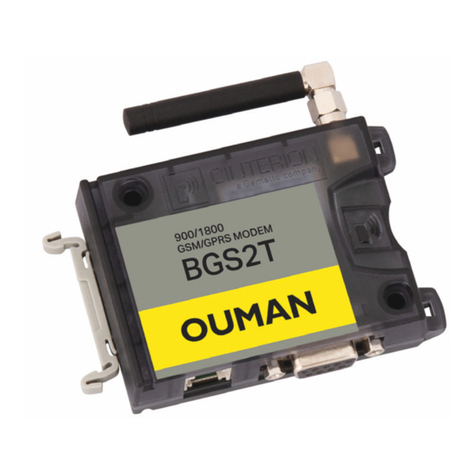
OUMAN
OUMAN GSMMOD10 quick start guide
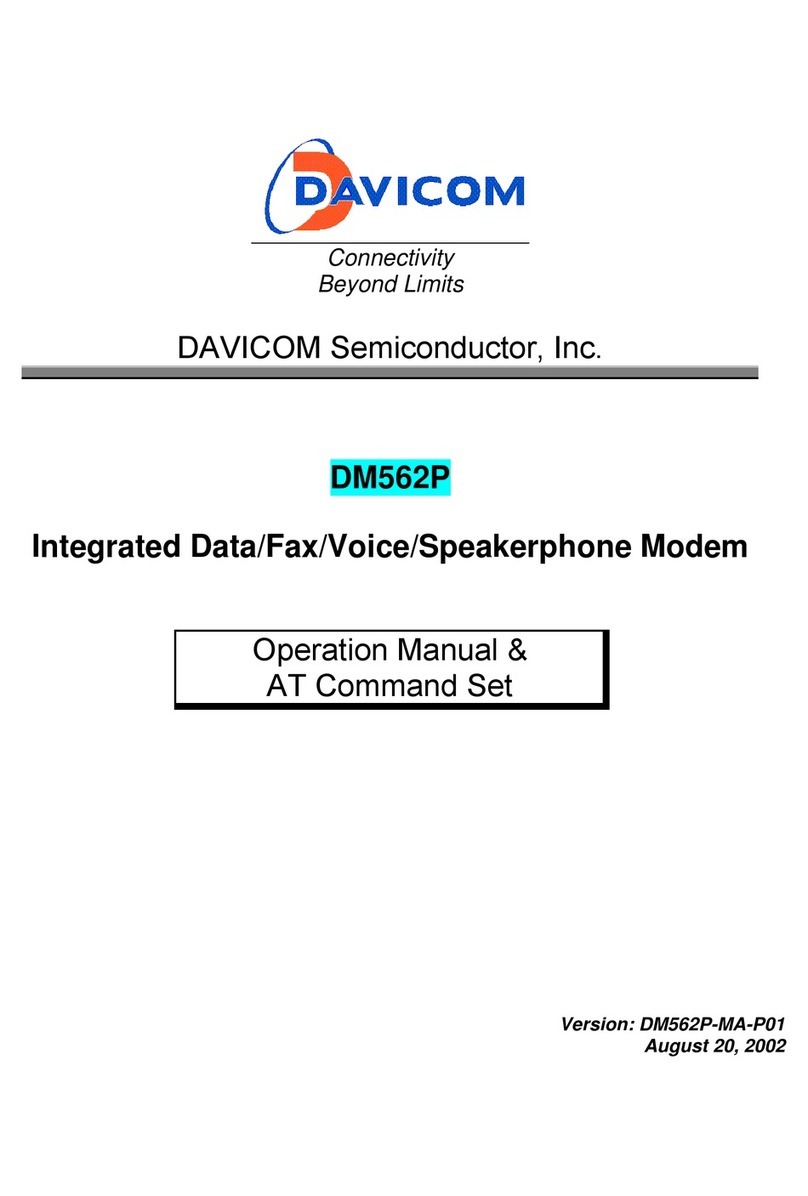
Davicom
Davicom DM562P Operation manual
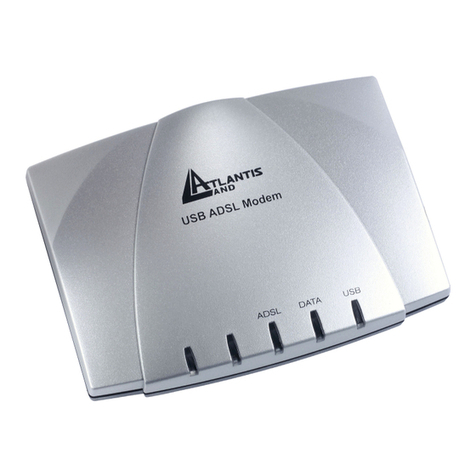
Atlantis Land
Atlantis Land I-Storm USB ADSL modem A01-AU2 manual

Franklin Wireless
Franklin Wireless CDU-680DORA Quick installation guide
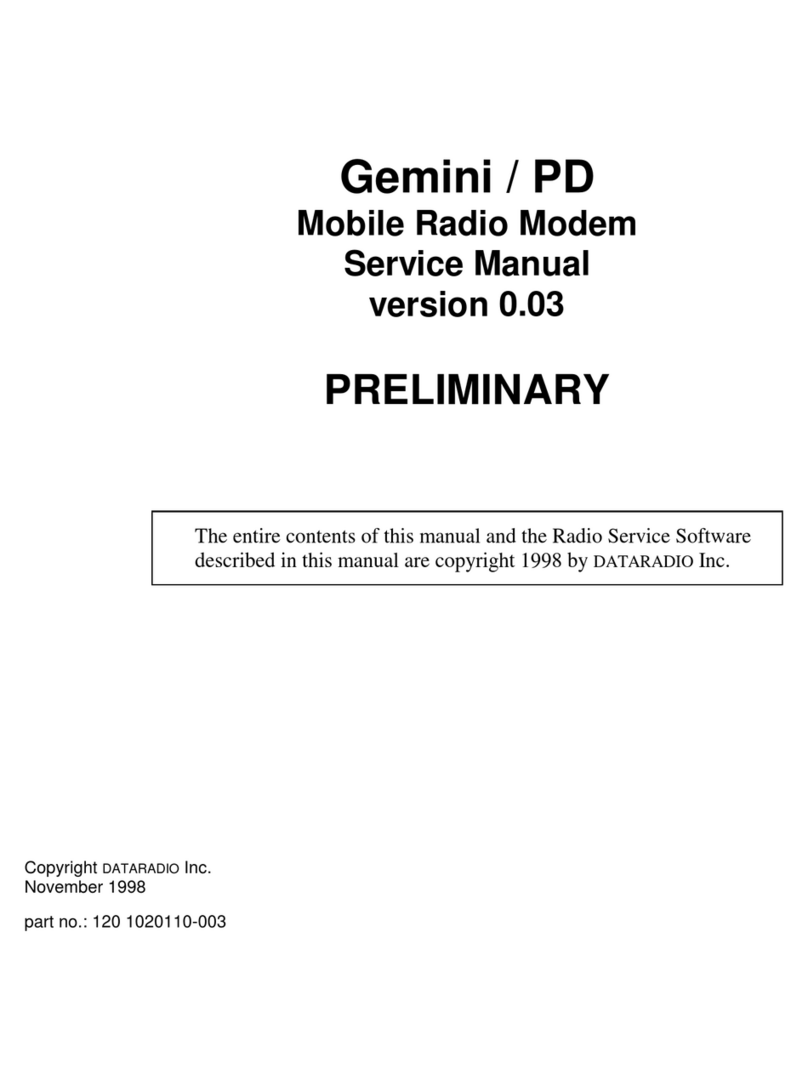
Dataradio
Dataradio Gemini PD Service manual

Maestro
Maestro 100 3G Quick start guide & user manual
